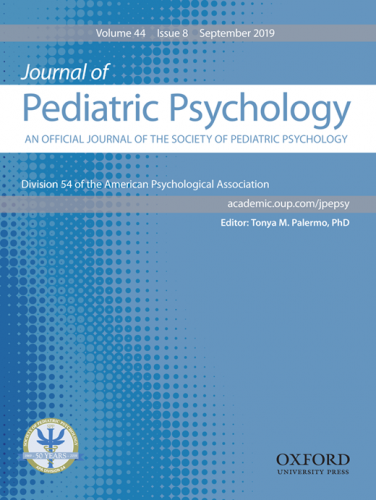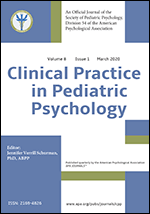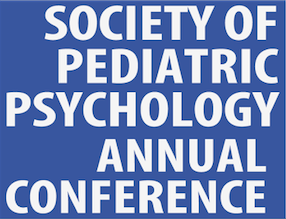Assessment Resource Sheet : Psychosocial Adjustment and Psychopathology
Measures of psychosocial adjustment and psychopathology include assessment tools designed to measure: (1) internalizing or externalizing rating scales, (2) broad-band rating scales (i.e., measures with a broad coverage of psychological adjustment constructs), and (3) self-related rating scales (i.e., measures of perceived self-esteem or self-concept). This list of evidence-based measures was originally published in the Journal of Pediatric Psychology (Holmbeck et al., 2008). All measures are classified as well-established assessment, approaching well-established assessment, and promising assessment. Criteria for each of these classifications in included in the Holmbeck et al. (2008) paper. Information on where to obtain the measure is included in parentheses after the name of each measure. Age ranges (when available) are included in parentheses. Central references are included after each table (and are cited with superscripts in the tables).
Internalizing or Externalizing Rating Scales
|
Assessments |
Well-established |
Approaching |
Promising |
|
ADHD Rating Scale-IV1 (ages 5-18) |
X | ||
|
Beck Anxiety Inventory(BAI)2 (ages 17-80) |
X | ||
|
Beck Depression Inventory(BDI)3 (adult; but used with adolescents) |
X | ||
|
Center for Epidemiologic Studies Depression Scale (CES-D)4, 5 [available from central reference] (adult; but used with adolescents) |
X | ||
|
Child and Adolescent Functional Assessment Scale (CAFAS)6[Functional Assessment Systems, LLC, 2140 Old Earhart Road, Ann Arbor, MI 48105] (1st to 12th grade) |
X | ||
|
Childhood Anxiety Sensitivity Index (CASI)7[Wendy K. Silverman, PhD, Child and Family Psychosocial Research Center, Child Anxiety and Phobia Program, Department of Psychology, Florida International University, Miami, FL 33199](ages 6-17) |
X | ||
|
Children’s Depression Inventory (CDI)8 (ages 7-13) |
X | ||
|
Children’s Somatization Inventory (CSI)9, 10 Walker, PhD, Division of Adolescent Medicine, Vanderbilt Children’s Hospital, 11128 Doctors’ Office Tower, Nashville, TN 37232-9060](ages 8-17) |
X | ||
|
Fear Survey Schedule for Children Revised (FSSC-R)11, 12mas H. Ollendick, PhD, Child Study Center, Department of Psychology, Virginia Polytechnic Institute & State University, Blacksburg, VA 24061] (ages 7-16) |
X | ||
|
Hospital Fears Questionnaire (HFQ)13[Michael C. Roberts, PhD, Clinical Child Psychology Program, 2009 Dole Human Development Center, University of Kansas, 1000 Sunnyside Avenue, Lawrence, KS 66045] (ages 6-12) |
X | ||
|
Multidimensional Anxiety Scale for Children (MASC)14[www.mhs.com] (ages 8-18) |
X | ||
|
Positive and Negative Affect Schedule for Children (PANAS-C)15[available from the central reference] (3rd to 8th grade) |
X | ||
|
Revised Children’s Manifest Anxiety Scale (RCMAS)16[www.wpspublish.com] (ages 6-19) |
X | ||
|
Reynolds Adolescent Depression Scale-2nd Edition (RADS-2)17 (ages 11-20) |
X | ||
|
The Screen for Child Anxiety Related Emotional Disorders (SCARED) (PDF, 218KB)18 (ages 9-18) |
X | ||
|
Social Anxiety Scale for Adolescents (SAS-A)19[Annette La Greca, PhD, University of Miami, Department of Psychology, PO Box 249229, Coral Gables, FL 33124] (designed for adults; adapted for adolescents) |
X | ||
|
Social Anxiety Scale for Children (SASC-R)19[Annette La Greca, PhD, University of Miami, Department of Psychology, PO Box 249229, Coral Gables, FL 33124] |
X | ||
|
The Social Phobia and Anxiety Inventory for Children (SPAI-C)20 (ages 8-14) |
X | ||
|
The State-Trait Anxiety Inventory for Children (STAIC)21 (ages 9-12) |
X |
Broad-Band Rating Scales
|
Assessments |
Well-established |
Approaching |
Promising |
|
Behavior Assessment System for Children (BASC)22 (ages 2-18) |
X | ||
|
Brief Symptom Inventory(BSI)23, 24 (ages 13+) |
X | ||
|
Child Behavior Checklist (CBCL/4-18, 1991; Youth Self-Report, YSR, 1991; Teacher Report Form, TRF, 1991; CBCL/6-18, 2001; Youth Self-Report, YSR, 2001; Teacher Report Form, TRF, 2001)25, 26 (ages 4-18; 6-18) |
X | ||
|
Children’s Global Assessment Scale (CGAS)27 [available from the central reference](ages 7-16) |
X | ||
|
Conners’ Rating Scales-Revised (CRS-R)28 (parent/teacher: ages 3-17; self-report: ages 12-17) |
X | ||
|
Minnesota Multiphasic Personality Inventory-Adolescent (MMPI-A)29 [www.pearsonassessments.com] (ages 14-18) |
X | ||
|
Pediatric Behavior Scale (PBS)30 [available from the central reference] (basic scale: ages 6-16; preschool scale: ages 3-5) |
X | ||
|
Social Adjustment Inventory for Children and Adolescents (SAICA)31 [Myrna Weissman, Columbia University, New York State Psychiatric Institute, 1051 Riverside Drive, Unit 24, New York, NY 10032] (ages 6-18) |
X | ||
| X | |||
|
Symptom Checklist-90-Revised (SCL-90-R)33, 34 (ages 13+) |
X |
Self-Related Rating Scales
|
Assessments |
Well-established |
Approaching |
Promising |
|
Coopersmith Self-Esteem Inventory(CSEI)35 [available from the central reference] |
X | ||
|
The Pictorial Scale of Perceived Competence and Social Acceptance for Young Children (PSPCSAYC)36, 37 [Susan Harter, PhD, University of Denver, Department of Psychology, 2155 South Race Street, Denver, CO 80208] (ages 4-7) |
X | ||
|
Piers-Harris Children’s Self-Concept Scale, Second Edition (Piers-Harris 2)38 (ages 7-18) |
X | ||
|
Rosenberg Self-Esteem Scale (SES)39 (adolescents) |
X | ||
|
Self-Perception Profile for Adolescents (SPPA)40 [Susan Harter, PhD, University of Denver, Department of Psychology, 2155 South Race Street, Denver, CO 80208] (ages 13-20) |
X | ||
|
Self-Perception Profile for Children (SPPC)41 [Susan Harter, PhD, University of Denver, Department of Psychology, 2155 South Race Street, Denver, CO 80208](ages 8-13) |
X |
1. DuPaul, G.J., Power, T.J., Anastopoulus, A.D., & Reid, R. (1998). ADHD Rating Scale-IV: Checklists, Norms, and Clinical Interpretation. New York: Guilford.
2. Beck, A.T., Epstein, N., Brown, G., Steer, R.A. (1988). An inventory for measuring clinical anxiety: Psychometric properties. Journal of Consulting and Clinical Psychology, 56, 893-897.
3. Beck, A.T., Ward, C.H., Mendelson, M., Mock, J.E., & Erbaugh, J. (1961). An inventory for measuring depression. Archives of General Psychiatry, 4, 561-571.
4. Radloff, L.S. (1977). A CES-D scale: A self-report depression scale for research in the general population. Applied Psychological Measurement, 1, 385-401.
5. Roberts, R.E., Andrews, J.A., Lewinsohn, P.M., & Hops, H. (1990). Assessment of depression in adolescents using the Center for Epidemiological Studies - Depression Scale. Psychological Assessment: Journal of Consulting and Clinical Psychology, 2, 122-128.
6. Hodges, K. (1989). Child and Adolescent Functional Assessment Scale. Ypsilanti, MI: Department of Psychology, Eastern Michigan University.
7. Silverman, W.K., Fleisig, W., Rabian, B., & Peterson, R.A. (1991). Childhood anxiety sensitivity index. Behaviour Research and Therapy, 37, 903-917.
8. Kovacs, M. (1985). The Children’s Depression Inventory (CDI). Psychopharmacology Bulletin, 21, 995-998.
9. Walker, L.S., Garber, J., & Greene, J.W. (1991). Somatization symptoms in pediatric abdominal pain patients: Relation to chronicity of abdominal pain and parent somatization. Journal of Abnormal Child Psychology, 19, 379-394.
10. Garber, J. Walker, L.S., & Zeman, J. (1991). Somatization symptoms in a community sample of children and adolescents: Further validation of the Children’s Somatization Inventory, Psychological Assessment, 3, 588-595.
11. Scherer M.W. and Nakamura C.Y. (1968). A Fear Survey Schedule for Children (FSS-FC): A factor analytic comparison with manifest anxiety (CMAS). Behaviour Research and Therapy. 6, 173-182.
12. Ollendick, T.H. (1983) Reliability and validity of the revised fear survey schedule for children (FSSC-R). Behaviour Research and Therapy, 21, 685-692.
13. Roberts, M.C., Wurtele, S.K., Boone, R.R., Ginther, L.J., & Elkins, P.D. (1981). Reduction of medical fears by use of modeling: A preventive application in a general population of children. Journal of Pediatric Psychology, 6, 293-300.
14. March, J. (1998). Manual for the Multidimensional Anxiety Scale for Children (MASC). Toronto: Multi-Health Systems, Inc.
15. Laurent, J., Catanzaro, S.J, Joiner, T.E.J., Jr., Rudolph, K.D., Potter, K.I., Lambert, S., Osborne, L., & Gathright, T. (1999). A measure of positive and negative affect for children: Scale development and preliminary validation. Psychological Assessment, 11, 326-338.
16. Reynolds, C.R., & Richmond, B.O. (1985). Revised Children’s Manifest Anxiety Scale (RCMAS) Manual. Western Psychological Services: Los Angeles, CA.
17. Reynolds, W.M. (2002). Reynolds Adolescent Depression Scale: Professional Manual (2nd ed.). Lutz, FL: Psychological Assessment Resources.
18. Birmaher, B., Khetarpai, S., Brent, D., Cully, M., Balach, L., Kaufman, J., & McKenzie, N. (1997). The Screen for Child Anxiety Related Emotional Disorders (SCARED): Scale construction and psychometric characteristics. Journal of the American Academy of Child and Adolescent Psychiatry, 36, 545-553.
19. La Greca, A.M. (1999). Manual for the Social Anxiety Scales for Children and Adolescents. Miami, FL: Author.
20. Beidel, D.C., Turner, S.M., & Morris, T.L. (1995). A new inventory to assess childhood social anxiety and phobia: The Social Phobia and Anxiety Inventory for Children. Psychological Assessment, 7, 73 -79.
21. Spielberger, C.D. (1973). Manual for the State-Trait Anxiety Inventory for Children. Palo Alto, CA: Consulting Psychologists Press.
22. Reynolds, C.R., & Kamphaus, R.W. (1998). Behavioral Assessment System for Children Manual. Circle Pines, MN: American Guidance Service.
23. Derogatis, L.R. (1993). Brief Symptom Inventory: Administration, Scoring, and Procedures Manual. Minneapolis, MN: National Computer Systems.
24. Derogatis, L.R. (2000). BSI-18: Administration, scoring and procedures manual. Minneapolis, MN: National Computer Systems.
25. Achenbach, T.M. (1991a). Manual for the Child Behavior Checklist/4-18 and 1991 Profile. Burlington, VT: University of Vermont, Department of Psychiatry.
26. Achenbach, T.M., & Rescorla, L.A. (2001). Manual for the ASEBA School-Age Forms and Profiles. Burlington, VT: University of Vermont, Research Center for Children, Youth, & Families.
27. Shaffer, D., Gould, M.S., Brasic, J., Ambrosini, P., Fisher, P., Bird, H., & Aluwahlia, S. (1983). A children’s global assessment scale. Archives of General Psychiatry, 40, 1228-1231.
28. Conners, C.K. (2001). Conners’ Rating Scales-Revised: Technical Manual. North Tonawanda, NY: Multi-Health System.
29. Butcher, J.N., Williams, C.L., Graham, J.R., Archer, R.P., Tellegan, A., Ben-Porath, Y.S., & Kaemmer, B. (1992). Manual for Administration, Scoring, and Interpretation of the Minnesota Multiphasic Personality Inventory-Adolescent. Minneapolis, MN: University of Minnesota Press.
30. Lindgren, S.D., & Koeppl, G.K. (1987). Assessing child behavior problems in a medical setting: Development of the Pediatric Behavior Scale. In R. J. Prinz (Ed.), Advances in behavioral assessment of children and families (Vol. 3, pp. 57-90) Greenwich, CT: JAI Press Inc.
31. John, K., Gammon, G., Prusoff, B., & Warner, V. (1987). The Social Adjustment Schedule for Children and Adolescents (SAICA): Testing of a new semi-structured interview. Journal of the American Academy of Child and Adolescent Psychiatry, 26, 898-911.
32. Weissman, M.M., & Bothwell, S. (1976). Assessment of social adjustment by patient self-report. Archives of General Psychiatry, 33, 1111-1115.
33. Derogatis, L. (1983). The SCL-90 administration, scoring and procedures manual. Towson, MD: Clinical Psychometric Research.
34. Derogatis, L.R. (1994). Symptom Checklist-90-Revised Administration, Scoring, and Procedures Manual (3rd ed.). Minneapolis, MN: National Computer Systems.
35. Coopersmith, S. (1967). The Antecedents of Self-Esteem. San Francisco: W. H. Freeman.
36. Harter, S. (1983). Manual for the Pictorial Scale of Perceived Competence and Social Acceptance for Young Children. Unpublished manuscript, University of Denver.
37. Harter, S. & Pike, R. (1984). The Pictorial Scale of Perceived Competence and Social Acceptance for Young Children, Child Development, 55, 1969-1982.
38. Piers, E.V. & Herzberg, D.S. (2002). Piers-Harris Children’s Self-Concept Scale, Second Edition: Manual. Los Angeles: Western Psychological Services.
39. Rosenberg, M. (1965). Society and the Adolescent Self-Image. Princeton, NJ: Princeton University Press.
40. Harter, S. (1988). Manual for the Self-Perception Profile for Adolescents. Unpublished manuscript, University of Denver.
41. Harter, S. (1985). Manual for the Self-Perception Profile for Children. Revision of the Perceived Competence Scale for Children. Unpublished manuscript, University of Denver.



